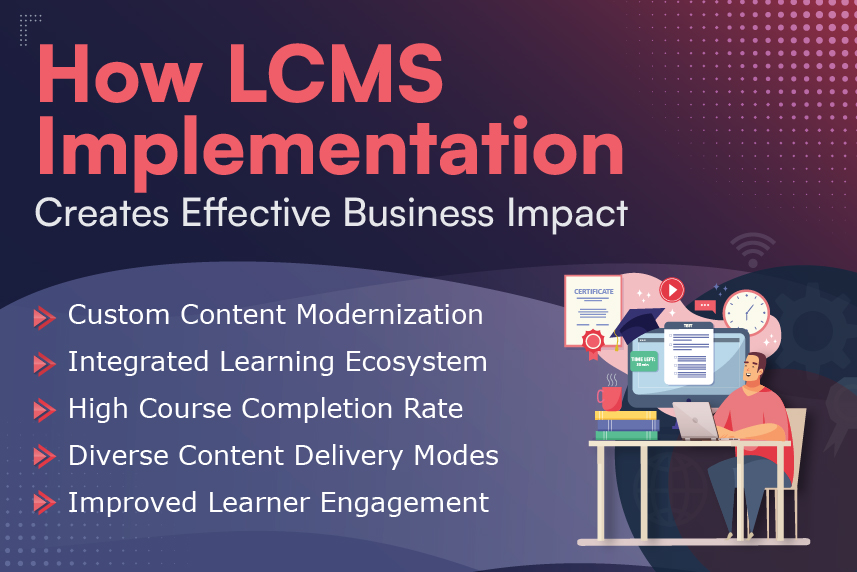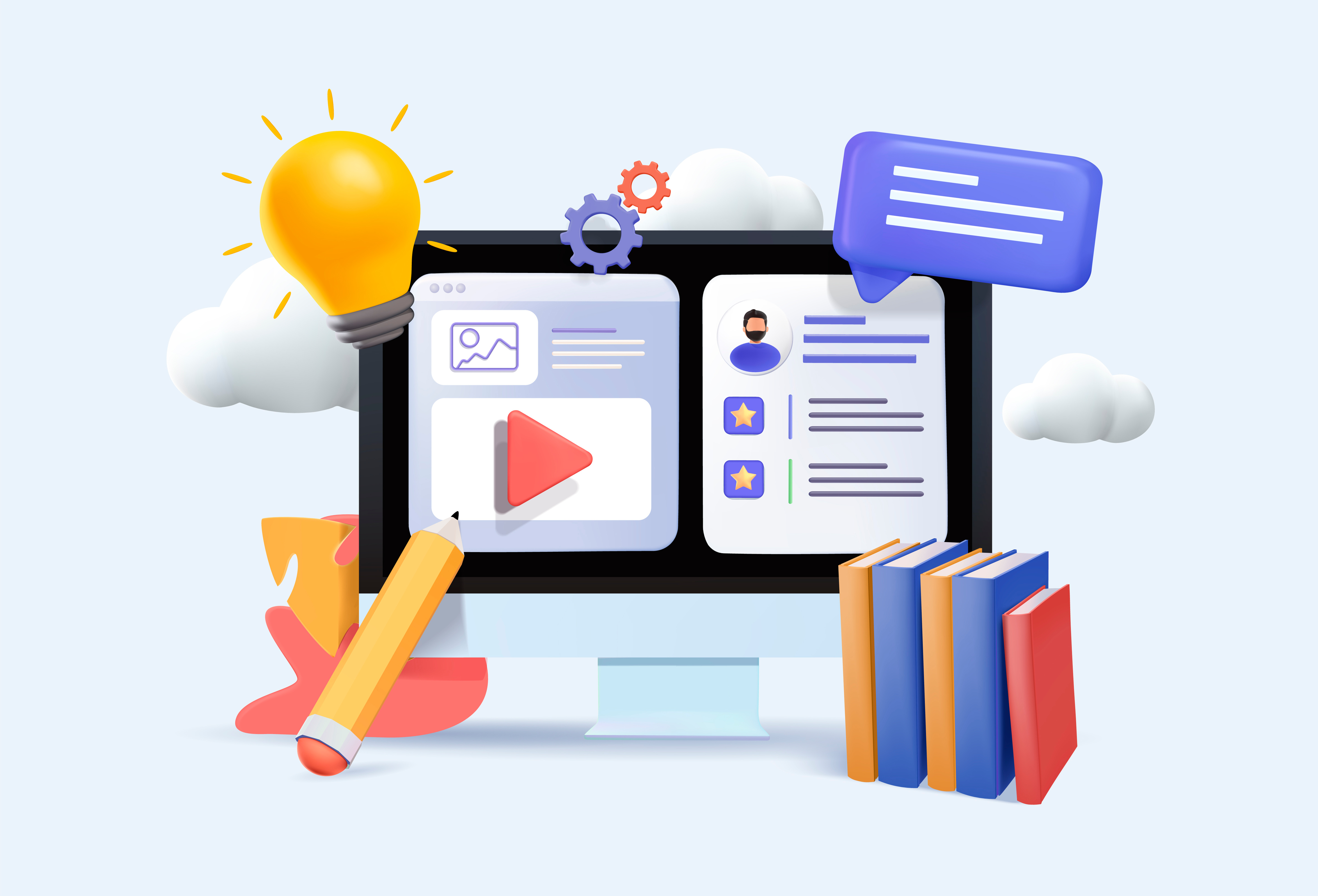
The future of learning is here, and L&D is at the center stage delivering effective learning support to employees. This is amid the changing dynamics of learners and the learning ecosystem and changing competency demands of high-performing organizations – all intertwined and growing like a magical beanstalk overnight.
Businesses have significantly transformed and accelerated their digital transformation during the COVID-19 pandemic. Even the preferences of learners and modes of learning have evolved rapidly. Moreover, the learning ecosystem has witnessed the implementation of newer technologies.
For the future workplace, L&D will play a crucial role in building a culture of continuous learning throughout the organization to meet its business goals. Not to forget, content is key to achieving business goals through a learned, skilled workforce.
With today’s workforce working in the hybrid mode already, training programs need to be resigned as mere learning programs. Classroom training needs to be converted to blended learning, which includes self-paced learning and synchronous online training. In this case, content is not confined to training rooms and in physical copies as in a traditional setup. It is available in abundance in many formats inside different systems.
Challenges in Managing Enormous Volumes of Content
L&D needs to increase access to content and prioritize specific learning interventions over others. They need to think about how content can be integrated into the flow of work, so that the workforce and the business can grow as much as possible, given the availability of shorter, faster, and integrated type of learning.
Large enterprises and off-the-shelf eLearning content providers deliver content through various learning management systems (LMS’s) in different formats. The challenge these organizations now face is to manage this ocean of content.
Here are some common challenges faced when one is tasked with managing large volumes of content:
- Due to the changing persona and learning preferences of learners, long-form content needs to be repurposed and delivered in the form of short courses
- Learners want to learn in a social environment and contribute to the content
- Enterprises want the content to be consistent across their organization
- Content undergoes continuous changes due to compliance, process, implementation, and methodology changes within or outside the organization
- Course authors are spread across different work locations as ‘work from anywhere’ is taking predominance
- As enterprises migrate or use multiple LMS’s, managing multiple content formats is a big challenge
- It’s also a challenge to create, deploy, and manage various versions of courses
What is LCMS and How to Deploy It?
Thankfully, all the above challenges can be addressed through one solution: learning content management system (LCMS). An LCMS is an integration of LMS and content management system (CMS). It’s an environment that allows developers to create, store, reuse, manage, and deliver learning content from a central repository. LCMS’s generally work with content that is based on a learning object model.
Any business looking to move to a learning object approach or capture intellectual capital through knowledge management should consider deploying an LCMS that comes with the required storage (data warehousing) and content management capabilities.

However, implementing an LCMS is more than just implementing the system. It needs careful planning of the L&D team’s processes to become fully efficient.
The planning phase can be categorized into four stages:
Stage 1: Define
This is the first step in the process. It starts with identifying business needs such as:
- a) Reusing the content to be published in various formats.
- b) Making courses available in different languages.
- c) Making courses responsive in nature.
- d) Revamping the look and feel of courses while keeping the content the same.
Stage 2: Design
Based on the business goals, learning consultants, instructional designers, and programmers can work together on:
- a) Identifying the reusable learning objects (RLOs): RLOs are reusable, transportable, and context-independent chunks of instruction that are managed and delivered digitally. Such a design approach enables cost-efficient, speedy development of learning that offers a consistent message while cutting down learning maintenance costs.
An example of RLO could be an image or organizational chart used throughout the corporation and housed in the LCMS, so that it only needs to be updated in one location. - b) Tagging each RLO with the metadata tag: An LCMS’s successful and efficient deployment largely depends on the effective development and application of learning objects – which are media-independent, reusable pieces of information organized by a metadata classification system.
- c) Designing templates to increase interactivity and engagement: This approach leads to a major reduction in operational costs while improving learner engagement and driving business growth. Besides, other aspects like latest design style, seamless navigation, and accessibility support can be taken care of while designing these templates.
Once done right, the templates could be used by authors/SMEs to create content that can be automated. - d) Defining the folder structure to store content and media assets for easy search and updates in the future.
- e) Setting up best practices like ‘defining file naming conventions’ to help quickly locate the required files.
- f) Creating output presentation templates that allow publishing courses in various formats such as PDF, Word Doc, XLS, and SCORM package.
Stage 3: Develop
- a) Extracting all reusable assets and content from existing courses.
- b) Extracting content to be stored in a modular folder structure with standardized naming conventions: This is to ensure the use of automation during the content population process.
- c) Creating a document that outlines how to structure the old content in LCMS format: This basically helps identify the parts of the content that can be mapped as RLO, what the metatags should ideally be, and so on. It ensures one uses the capabilities of LCMS to the fullest while migrating the content.
- d) Copying all media assets into an appropriate folder structure.
- e) Authoring courses in the LCMS using the templates and media assets available in it.
- f) Performing quality checks to ensure the migration is done correctly.
Using LCMS for new content creation is now easier as one simply needs to follow three basic steps: use the required template, upload assets, and create courses.
Stage 4: Delivery
The final stage is making this authored content ready for delivery. To enable this, an LCMS can provide a bunch of output templates like creating a document, PDF, SCORM package, and using the course content as RLO. One can publish content by simply selecting the output template and the RLOs.
Once the process is set for the design and delivery of the content, the benefits to the business are unlimited. The business can quickly and effectively tap the potential of the content in their organization.
Given below are few of the business benefits we have seen for Harbinger customers that implemented an LCMS and revolutionized their content:
- Better business growth
- Reduced operational expenses: A global training and competency management leader’s operational costs decreased 81% after Harbinger migrated their courses to an LCMS while meeting custom content modernization requirements.
- Increased learner engagement
- Quick launch of new product lines using reusable content
- Increased go-to-market speed
- Increased rate of customer acquisition and learner adoption
- Higher course completion rate
- Integrated, robust, and scalable learning ecosystem

Wrapping Up
To sum it up, an LCMS provides organizations with complete control over the learning content lifecycle, from authoring to publishing to even creating the learning content analysis. This streamlines several key processes.
An LCMS is also useful for a large and varied base of users, such as content developers, instructional designers, and project managers, as they can customize learning content to accommodate different output requirements. It does make LCMS one of the best ways to restructure and repurpose online learning content
Not surprisingly, with an LCMS, organizations get a comprehensive tool to meet modern learning needs. If you have any query related to LCMS or need help with implementing an LCMS-based content strategy or enabling scalable, rapid content development and delivery using LCMS, reach out to us at contact@harbingergroup.com.






